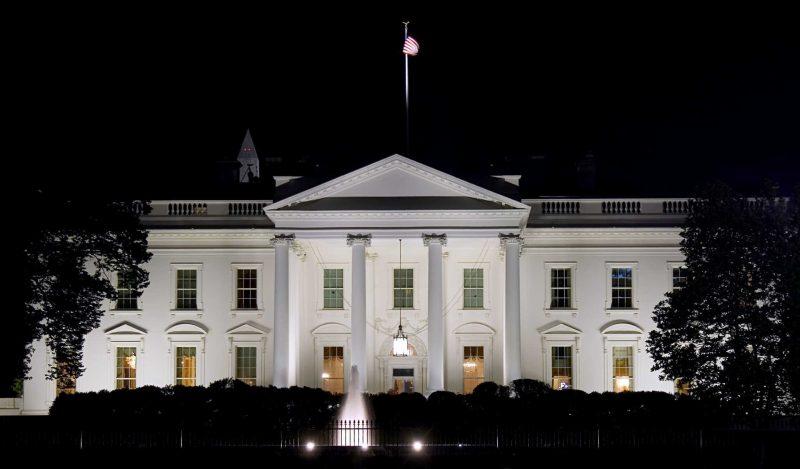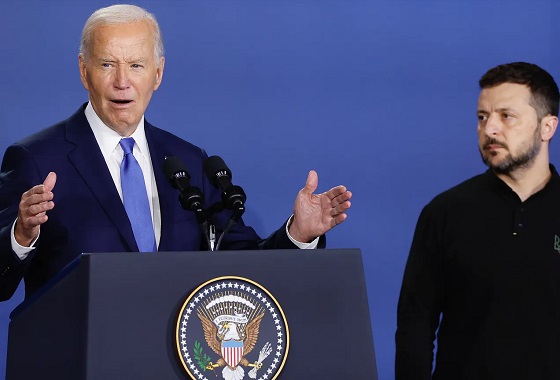Brownstone Institute
EU Digital Identity Wallet Pilots Roll Out Under the Radar

From the Brownstone Institute
BY
As 2023 continues, the European Commission appears busy developing and running pilots for its EU Digital Identity Wallet (EUDI), which it intends to make available to all EU citizens in the near future. But while the European Commission (EC) boasts the prospective EUDI’s convenience, security, and wide range of prospective use cases in daily life, what’s less discussed is the tool’s potential for a bevy of ethical and surveillance-related issues.
What is the EU Digital Identity Wallet (EUDI)?
The EU Digital Wallet, often referred to as the EU Digital Identity Wallet (EUDI), is slated to be offered to the European public in the years ahead. According to the European Commission, “EU Digital Identity Wallets are personal digital wallets allowing citizens to digitally identify themselves, store and manage identity data and official documents in electronic format. These may include a driving licence, medical prescriptions or education qualifications.”
As legislation streamlining their slated use across Europe is finalized, the European Commission is advancing its efforts to roll out EUDIs amongst the general European public, where over 250 private corporations and public authorities are participating in four large-scale pilot projects. At the time of writing, the EU has invested €46 million into these pilots.
Indeed, a wide range of use cases are already being tested in the EUDI pilot projects. These include using the wallets to access government services, register, and activate SIM cards for mobile network services, sign contracts, facilitate travel, and present educational credentials. All together, these use cases suggest the Digital Identity Wallets’ prospective utilization across a wide range of services essential to daily life.
Convenience, But for Whom?
The European Commission frequently plays up the digital wallet’s convenience, with messaging boasting that users will be able to use the Wallets to check into hotels, file tax returns, rent cars, and securely open bank accounts. European Commission President Ursula von der Leyen highlighted the following in a 2020 State of the Union address, where she proposed the concept of a “secure European e-identity:”
Every time an App or website asks us to create a new digital identity or to easily log on via a big platform, we have no idea what happens to our data in reality. That is why the Commission will propose a secure European e-identity. One that we trust and that any citizen can use anywhere in Europe to do anything from paying your taxes to renting a bicycle. A technology where we can control ourselves what data is used and how.
Certainly, von der Leyen is correct that “we have no idea what happens to our data” when we create online accounts or log in to private services, positing that Digital ID can work to solve a core problem many people have when using the internet.
But critically, the European “e-identity,” and digital identification methods generally, pose a bevy of new issues for civilians in both the short and long term. Namely, while Digital ID can provide users access to services, a 2018 WEF report on Digital ID admits the tool’s propensity to exclude; “[f]or individuals, [verifiable IDs] open up (or close off) the digital world, with its jobs, political activities, education, financial services, healthcare and more.”
And indeed, within the control of a corrupted state or other governance structures, Digital ID’s propensity to “close off” the digital world appears ripe for misuse or abuse. Researcher Eve Hayes de Kalaf, for example, writes in the Conversation that “states can weaponise internationally sponsored ID systems” against vulnerable populations. She highlights an example from the Dominican Republic, where long-term discrimination against Haitian-descended persons manifested in the stripping of their Dominican nationality in 2013, rendering them stateless.
Meanwhile, it’s not difficult to imagine others falling through the digital “cracks” as Digital ID systems become mainstream and interconnected with, if not a prerequisite for, accessing critical social and financial services and supports.
As Jeremy Loffredo and Max Blumenthal elucidate in 2021 reporting for the Grayzone, for example, the 2017 introduction of Aadhaar, India’s biometric ID system, “which tracks users’ movements between cities,” led to a spate of deaths in rural India as difficulties accessing the Aadhaar system functionally blocked goods and benefits recipients from accessing the country’s ration stores, leaving them to even starve. India’s Scroll reported that, in a random sampling of 18 villages in India where biometric authentication had been mandated to access government-subsidized food rations, 37 percent of cardholders were unable to obtain their rations.
Despite the devastation it has caused, Aadhaar has ultimately been promoted as a success, and Rest of World reports that India’s setting up international partnerships to export its popular Unified Payments Interface (UPI), an instant payment system which uses the Aadhaar biometric ID system as its base, elsewhere.
Clearly, Digital ID poses significant possible societal harms if implemented hastily. Despite these possible harms, as I note for Unlimited Hangout, a near-universal adoption of Digital ID systems increasingly appears inevitable, with “Juniper Research [estimating] that governments will have issued about 5 billion digital ID credentials by 2024, and a 2019 Goode Intelligence report [suggesting] digital identity and verification will be a $15 billion market by 2024.”
Further, legislative strides have been made towards the digital wallet’s interoperability across the EU. In other words, key services are being hyper-centralized across borders and digitized in ways more traceable than paper counterparts could have been — all at the authorities’ fingertips.
Critically, the EUDI Wallet is apparently slated to connect with or otherwise include financial services, where EU citizens will be able to use their EUDI to open bank accounts and even apply for loans. Further, language from a European Central Bank policy brief on the European Digital Identity Framework suggests that the “EUDI wallet will bring benefits to all the stakeholders of the payment ecosystem” even including “foreseen support for the digital euro.”
While the European Commission’s keen to spotlight the EUDI’s alleged benefits for “the stakeholders of the payment ecosystem,” it appears less eager to discuss the dangers surrounding the plausible, if not likely, linkage of digital identity with money, and especially digital currencies, where elite capacities to track, or even manipulate or block civilians’ abilities to accept or make payments, could be unprecedented.
In short, EU Digital Identity Wallets are slated to be convenient for everyday civilian use. At the same time, these wallets, and other adjacent digital ID systems budding elsewhere, could also be convenient for governments and governance structures looking to surveil, monitor or otherwise manipulate or control critical aspects of citizens’ lives en masse.
The DIIA Connection
Despite its lack of EU member status and war on its hands to boot, Ukraine is involved in the EU Digital Wallet pilots. Namely, as I reported on my Substack, DIIA, Ukraine’s hyper-centralized state-in-a-smartphone app, is assisting the EU Digital Wallet’s rollout. In fact, Ukrainian Minister of Digital Transformation Mykhailo Fedorov highlighted in a Telegram post from July that DIIA representatives had even showed off the DIIA app’s capabilities at the POTENTIAL (Pilots for European Digital Identity Wallet) Consortium this summer.
Notably, many of the EU Digital Wallet’s use cases being tested in the pilots are already reality with Ukraine’s DIIA app. Indeed, Ukrainians use DIIA for a range of day-to-day activities, including to verify their identities to use banking services, hold a variety of digital IDs (such as drivers’ licenses and biometric passports) and even pay certain taxes and access social services for families. Ukraine’s Ministry of Digital Transformation has emphasized its intention to make all public services available online: DIIA is to be the “one-stop-shop” for these services.
And, as I’ve mentioned before in previous reporting for my Substack and Unlimited Hangout, DIIA’s scope creep continues as conflict deepens, with the app providing war-adjacent services. Ukrainian civilians affected by war have received stipendsthrough the app, for example, and can also verify their identities through DIIA to sign into e-Vorog (“e-enemy”), a chatbot that allows Ukrainian citizens to report information about Russian military whereabouts to the state.
All together, these conditions suggest DIIA may serve as a kind of blueprint for or precursor to Europe’s adjacent Digital Wallet, where the EU Digital Wallet, already a centralized application slated to assist citizens in a number of critical day-to-day services, could take on a growing number of government services across the European Union. While it remains to be seen what happens with the Digital Wallet rollouts in Europe, the wallet’s EU-wide implementation and smartphone app format, where features can be easily introduced, removed, or edited at will, means that scope creep on a comparable scale cannot be ruled out.
Conclusion
Many people are understandably interested in digital documents and other easy ways to access public services and complete tasks in a digital age. But these services and tools, when facilitated by states and adjacent governance structures, and unaccountable members of the private sector, come with significant ethical and surveillance concerns that should be extensively discussed and debated by the public. In this respect, it appears the prospective EU Digital Identity Wallet is no exception.
But debate or not, Digital Wallet pilot rollouts and EU member states’ respective Digital ID adoption is ongoing, with an EC press statement explaining that “everyone will have a right to have an EU Digital Identity” accepted in all EU Member States.
And while the European Commission communicates “there will be no obligation” to use an EU Digital ID Wallet, EC report Communication 2030 Digital Compass: The European Way for the Digital Decade elucidates that a 2030 target for the EU is for 80 percent of citizens to use an “electronic identification solution.” Ultimately, the mixed messaging leaves room for speculation that, even if Digital IDs are not obligatory when introduced, the general population could somehow be nudged or eventually even mandated into adopting Digital IDs to access key public services.
While Digital ID proponents emphasize the tools’ capacity for convenience and security in an increasingly online world, the ethical and privacy issues I’ve highlighted here signal that, if rolled out hastily, the EU Digital Identity Wallets could ultimately have disastrous and lasting consequences for privacy and civil liberties. And, once implemented, it seems Digital IDs could be difficult to roll back even if unpopular, ultimately nudging people into a technocratic nightmare they cannot easily escape.
In short, the dangers posed by emerging Digital ID systems like the EUDI Wallet cannot be discounted as Europe grows into its “digital decade.”
Brownstone Institute
If the President in the White House can’t make changes, who’s in charge?

From the Brownstone Institute
By
Who Controls the Administrative State?
President Trump on March 20, 2025, ordered the following: “The Secretary of Education shall, to the maximum extent appropriate and permitted by law, take all necessary steps to facilitate the closure of the Department of Education.”
That is interesting language: to “take all necessary steps to facilitate the closure” is not the same as closing it. And what is “permitted by law” is precisely what is in dispute.
It is meant to feel like abolition, and the media reported it as such, but it is not even close. This is not Trump’s fault. The supposed authoritarian has his hands tied in many directions, even over agencies he supposedly controls, the actions of which he must ultimately bear responsibility.
The Department of Education is an executive agency, created by Congress in 1979. Trump wants it gone forever. So do his voters. Can he do that? No but can he destaff the place and scatter its functions? No one knows for sure. Who decides? Presumably the highest court, eventually.
How this is decided – whether the president is actually in charge or really just a symbolic figure like the King of Sweden – affects not just this one destructive agency but hundreds more. Indeed, the fate of the whole of freedom and functioning of constitutional republics may depend on the answer.
All burning questions of politics today turn on who or what is in charge of the administrative state. No one knows the answer and this is for a reason. The main functioning of the modern state falls to a beast that does not exist in the Constitution.
The public mind has never had great love for bureaucracies. Consistent with Max Weber’s worry, they have put society in an impenetrable “iron cage” built of bloodless rationalism, needling edicts, corporatist corruption, and never-ending empire-building checked by neither budgetary restraint nor plebiscite.
Today’s full consciousness of the authority and ubiquity of the administrative state is rather new. The term itself is a mouthful and doesn’t come close to describing the breadth and depth of the problem, including its root systems and retail branches. The new awareness is that neither the people nor their elected representatives are really in charge of the regime under which we live, which betrays the whole political promise of the Enlightenment.
This dawning awareness is probably 100 years late. The machinery of what is popularly known as the “deep state” – I’ve argued there are deep, middle, and shallow layers – has been growing in the US since the inception of the civil service in 1883 and thoroughly entrenched over two world wars and countless crises at home and abroad.
The edifice of compulsion and control is indescribably huge. No one can agree precisely on how many agencies there are or how many people work for them, much less how many institutions and individuals work on contract for them, either directly or indirectly. And that is just the public face; the subterranean branch is far more elusive.
The revolt against them all came with the Covid controls, when everyone was surrounded on all sides by forces outside our purview and about which the politicians knew not much at all. Then those same institutional forces appear to be involved in overturning the rule of a very popular politician whom they tried to stop from gaining a second term.
The combination of this series of outrages – what Jefferson in his Declaration called “a long train of abuses and usurpations, pursuing invariably the same Object” – has led to a torrent of awareness. This has translated into political action.
A distinguishing mark of Trump’s second term has been an optically concerted effort, at least initially, to take control of and then curb administrative state power, more so than any executive in living memory. At every step in these efforts, there has been some barrier, even many on all sides.
There are at least 100 legal challenges making their way through courts. District judges are striking down Trump’s ability to fire workers, redirect funding, curb responsibilities, and otherwise change the way they do business.
Even the signature early achievement of DOGE – the shuttering of USAID – has been stopped by a judge with an attempt to reverse it. A judge has even dared tell the Trump administration who it can and cannot hire at USAID.
Not a day goes by when the New York Times does not manufacture some maudlin defense of the put-upon minions of the tax-funded managerial class. In this worldview, the agencies are always right, whereas any elected or appointed person seeking to rein them in or terminate them is attacking the public interest.
After all, as it turns out, legacy media and the administrative state have worked together for at least a century to cobble together what was conventionally called “the news.” Where would the NYT or the whole legacy media otherwise be?
So ferocious has been the pushback against even the paltry successes and often cosmetic reforms of MAGA/MAHA/DOGE that vigilantes have engaged in terrorism against Teslas and their owners. Not even returning astronauts from being “lost in space” has redeemed Elon Musk from the wrath of the ruling class. Hating him and his companies is the “new thing” for NPCs, on a long list that began with masks, shots, supporting Ukraine, and surgical rights for gender dysphoria.
What is really at stake, more so than any issue in American life (and this applies to states around the world) – far more than any ideological battles over left and right, red and blue, or race and class – is the status, power, and security of the administrative state itself and all its works.
We claim to support democracy yet all the while, empires of command-and-control have arisen among us. The victims have only one mechanism available to fight back: the vote. Can that work? We do not yet know. This question will likely be decided by the highest court.
All of which is awkward. It is impossible to get around this US government organizational chart. All but a handful of agencies live under the category of the executive branch. Article 2, Section 1, says: “The executive Power shall be vested in a President of the United States of America.”

Does the president control the whole of the executive branch in a meaningful way? One would think so. It’s impossible to understand how it could be otherwise. The chief executive is…the chief executive. He is held responsible for what these agencies do – we certainly blasted away at the Trump administration in the first term for everything that happened under his watch. In that case, and if the buck really does stop at the Oval Office desk, the president must have some modicum of control beyond the ability to tag a marionette to get the best parking spot at the agency.
What is the alternative to presidential oversight and management of the agencies listed in this branch of government? They run themselves? That claim means nothing in practice.
For an agency to be deemed “independent” turns out to mean codependency with the industries regulated, subsidized, penalized, or otherwise impacted by its operations. HUD does housing development, FDA does pharmaceuticals, DOA does farming, DOL does unions, DOE does oil and turbines, DOD does tanks and bombs, FAA does airlines, and so on It goes forever.
That’s what “independence” means in practice: total acquiescence to industrial cartels, trade groups, and behind-the-scenes systems of payola, blackmail, and graft, while the powerless among the people live with the results. This much we have learned and cannot unlearn.
That is precisely the problem that cries out for a solution. The solution of elections seems reasonable only if the people we elected actually have the authority over the thing they seek to reform.
There are criticisms of the idea of executive control of executive agencies, which is really nothing other than the system the Founders established.
First, conceding more power to the president raises fears that he will behave like a dictator, a fear that is legitimate. Partisan supporters of Trump won’t be happy when the precedent is cited to reverse Trump’s political priorities and the agencies turn on red-state voters in revenge.
That problem is solved by dismantling agency power itself, which, interestingly, is mostly what Trump’s executive orders have sought to achieve and which the courts and media have worked to stop.
Second, one worries about the return of the “spoils system,” the supposedly corrupt system by which the president hands out favors to friends in the form of emoluments, a practice the establishment of the civil service was supposed to stop.
In reality, the new system of the early 20th century fixed nothing but only added another layer, a permanent ruling class to participate more fully in a new type of spoils system that operated now under the cloak of science and efficiency.
Honestly, can we really compare the petty thievery of Tammany Hall to the global depredations of USAID?
Third, it is said that presidential control of agencies threatens to erode checks and balances. The obvious response is the organizational chart above. That happened long ago as Congress created and funded agency after agency from the Wilson to the Biden administration, all under executive control.
Congress perhaps wanted the administrative state to be an unannounced and unaccountable fourth branch, but nothing in the founding documents created or imagined such a thing.
If you are worried about being dominated and destroyed by a ravenous beast, the best approach is not to adopt one, feed it to adulthood, train it to attack and eat people, and then unleash it.
The Covid years taught us to fear the power of the agencies and those who control them not just nationally but globally. The question now is two-fold: what can be done about it and how to get from here to there?
Trump’s executive order on the Department of Education illustrates the point precisely. His administration is so uncertain of what it does and can control, even of agencies that are wholly executive agencies, listed clearly under the heading of executive agencies, that it has to dodge and weave practical and legal barriers and land mines, even in its own supposed executive pronouncements, even to urge what might amount to be minor reforms.
Whoever is in charge of such a system, it is clearly not the people.
Brownstone Institute
The New Enthusiasm for Slaughter

From the Brownstone Institute
By
What War Means
My mother once told me how my father still woke up screaming in the night years after I was born, decades after the Second World War (WWII) ended. I had not known – probably like most children of those who fought. For him, it was visions of his friends going down in burning aircraft – other bombers of his squadron off north Australia – and to be helpless, watching, as they burnt and fell. Few born after that war could really appreciate what their fathers, and mothers, went through.
Early in the movie Saving Private Ryan, there is an extended D-Day scene of the front doors of the landing craft opening on the Normandy beaches, and all those inside being torn apart by bullets. It happens to one landing craft after another. Bankers, teachers, students, and farmers being ripped in pieces and their guts spilling out whilst they, still alive, call for help that cannot come. That is what happens when a machine gun opens up through the open door of a landing craft, or an armored personnel carrier, of a group sent to secure a tree line.
It is what a lot of politicians are calling for now.
People with shares in the arms industry become a little richer every time one of those shells is fired and has to be replaced. They gain financially, and often politically, from bodies being ripped open. This is what we call war. It is increasingly popular as a political strategy, though generally for others and the children of others.
Of course, the effects of war go beyond the dismembering and lonely death of many of those fighting. Massacres of civilians and rape of women can become common, as brutality enables humans to be seen as unwanted objects. If all this sounds abstract, apply it to your loved ones and think what that would mean.
I believe there can be just wars, and this is not a discussion about the evil of war, or who is right or wrong in current wars. Just a recognition that war is something worth avoiding, despite its apparent popularity amongst many leaders and our media.
The EU Reverses Its Focus
When the Brexit vote determined that Britain would leave the European Union (EU), I, like many, despaired. We should learn from history, and the EU’s existence had coincided with the longest period of peace between Western European States in well over 2,000 years.
Leaving the EU seemed to be risking this success. Surely, it is better to work together, to talk and cooperate with old enemies, in a constructive way? The media, and the political left, center, and much of the right seemed at that time, all of nine years ago, to agree. Or so the story went.
We now face a new reality as the EU leadership scrambles to justify continuing a war. Not only continuing, but they had been staunchly refusing to even countenance discussion on ending the killing. It has taken a new regime from across the ocean, a subject of European mockery, to do that.
In Europe, and in parts of American politics, something is going on that is very different from the question of whether current wars are just or unjust. It is an apparent belief that advocacy for continued war is virtuous. Talking to leaders of an opposing country in a war that is killing Europeans by the tens of thousands has been seen as traitorous. Those proposing to view the issues from both sides are somehow “far right.”
The EU, once intended as an instrument to end war, now has a European rearmament strategy. The irony seems lost on both its leaders and its media. Arguments such as “peace through strength” are pathetic when accompanied by censorship, propaganda, and a refusal to talk.
As US Vice-President JD Vance recently asked European leaders, what values are they actually defending?
Europe’s Need for Outside Help
A lack of experience of war does not seem sufficient to explain the current enthusiasm to continue them. Architects of WWII in Europe had certainly experienced the carnage of the First World War. Apart from the financial incentives that human slaughter can bring, there are also political ideologies that enable the mass death of others to be turned into an abstract and even positive idea.
Those dying must be seen to be from a different class, of different intelligence, or otherwise justifiable fodder to feed the cause of the Rules-Based Order or whatever other slogan can distinguish an ‘us’ from a ‘them’…While the current incarnation seems more of a class thing than a geographical or nationalistic one, European history is ripe with variations of both.
Europe appears to be back where it used to be, the aristocracy burning the serfs when not visiting each other’s clubs. Shallow thinking has the day, and the media have adapted themselves accordingly. Democracy means ensuring that only the right people get into power.
Dismembered European corpses and terrorized children are just part of maintaining this ideological purity. War is acceptable once more. Let’s hope such leaders and ideologies can be sidelined by those beyond Europe who are willing to give peace a chance.
There is no virtue in the promotion of mass death. Europe, with its leadership, will benefit from outside help and basic education. It would benefit even further from leadership that values the lives of its people.
-

 2025 Federal Election2 days ago
2025 Federal Election2 days agoLiberals Replace Candidate Embroiled in Election Interference Scandal with Board Member of School Flagged in Canada’s Election Interference Inquiry
-

 Courageous Discourse1 day ago
Courageous Discourse1 day agoEurope Had 127,350 Cases of Measles in 2024
-

 2025 Federal Election2 days ago
2025 Federal Election2 days agoPierre Poilievre Declares War on Red Tape and Liberal Decay in Osoyoos
-

 Podcasts22 hours ago
Podcasts22 hours agoTrump’s Tariffs: The US, Canada, and the rest of the world
-

 Alberta2 days ago
Alberta2 days agoIs Canada’s Federation Fair?
-

 2025 Federal Election22 hours ago
2025 Federal Election22 hours agoMark Carney Comes to B.C. and Delivers a Masterclass in Liberal Arrogance
-

 COVID-192 days ago
COVID-192 days ago5 Stories the Media Buried This Week
-

 International2 days ago
International2 days agoBiden Lied About Everything, Including Nuclear Risk, During Ukraine Operation










